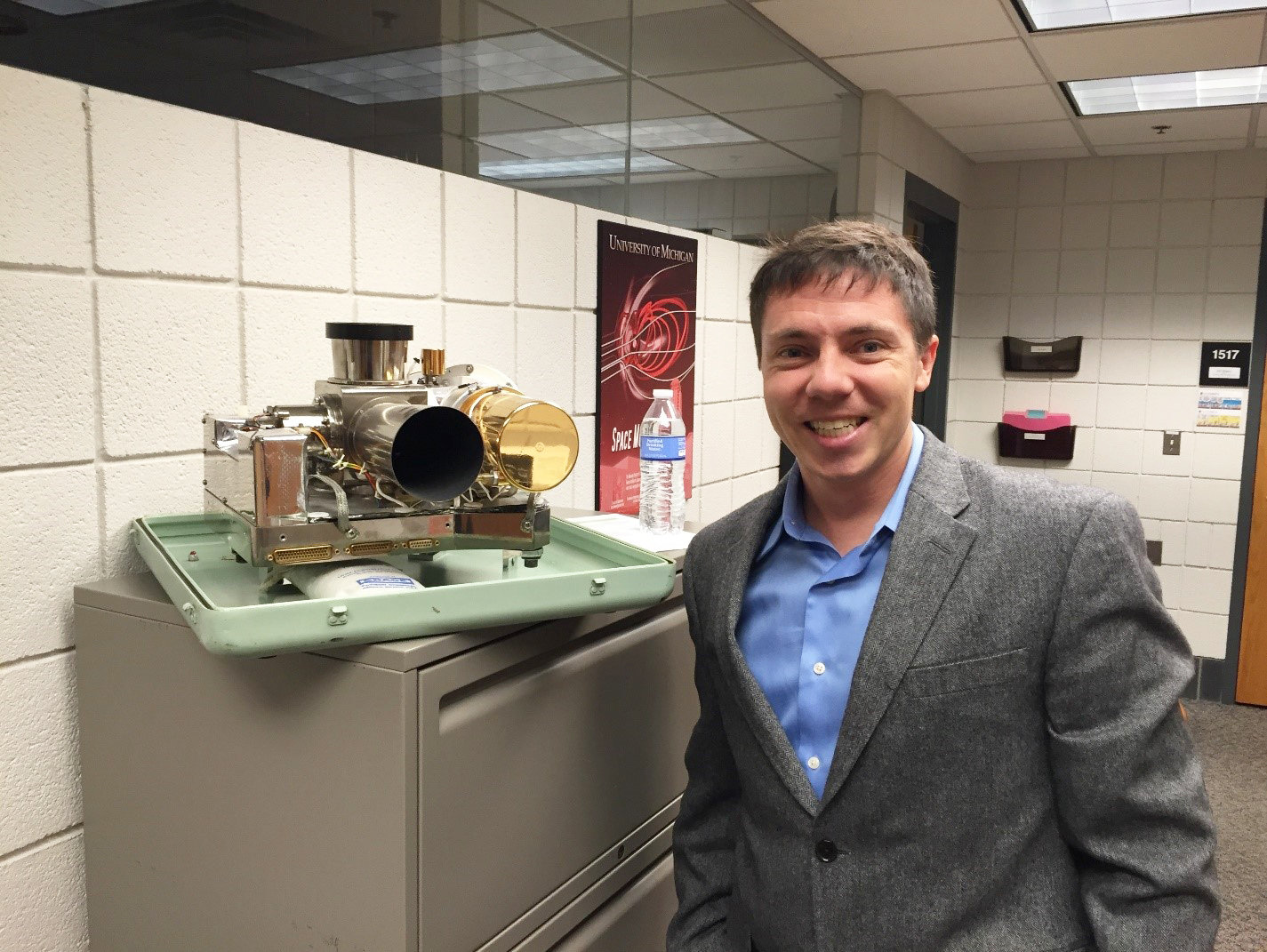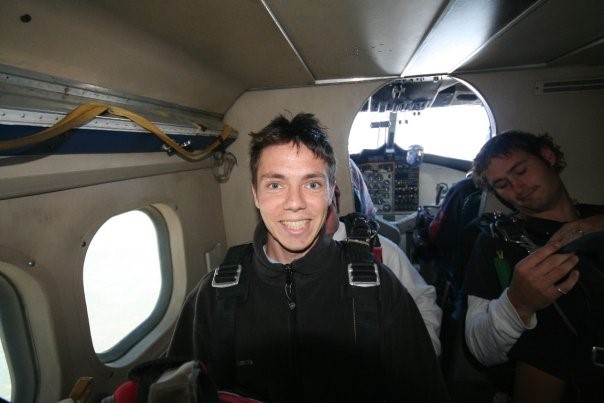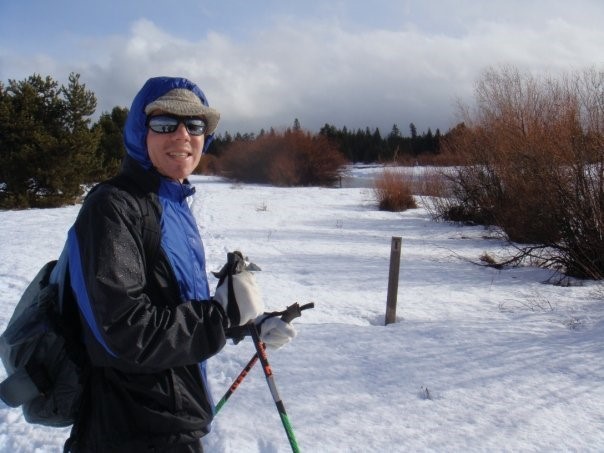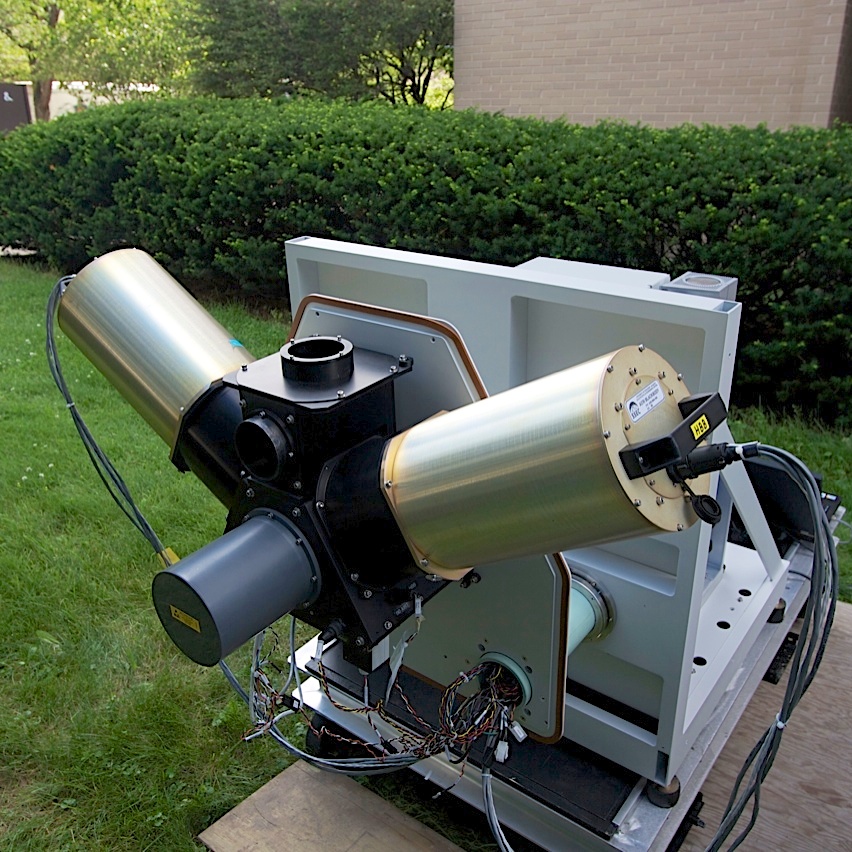UEC Profile: Modeling Radiative Effects
Published: 21 May 2019
A young scientist combines observations and calculations to study how Earth budgets its solar and terrestrial energy
This is the fifth article in a series of 2019 profiles on members of the ARM User Executive Committee (UEC).

As an undergraduate at the Massachusetts Institute of Technology (MIT), Daniel R. Feldman—now a rising star in atmospheric science—was an All-American in track and field.
His event was the 5,000 meters, where from a standing start, competitors settle into a steady lope and run about 3.1 miles, a distance just shy of getting to the top of Mount Kilimanjaro.
Today, Feldman is a scientist at Lawrence Berkeley National Laboratory (LBNL) in California, where he runs twice a week instead of twice a day. But for 10 years, at a steady lope, he has been in pursuit of better models of the radiative processes that balance Earth’s heat budget or send it askew.
Feldman graduated from MIT in 2002 (B.S., environmental engineering science) before beginning graduate studies at the California Institute of Technology (M.S., 2004, and PhD, 2008).
Then he was a postdoctoral fellow at the University of California, Berkeley, before joining LBNL.
To get a general idea of his research interests, look at any child’s drawing of the sun. One depiction of the science is right: Solar electromagnetic energy radiates equally in all directions in the form of rays.
From there, solar radiation speeds to Earth as pure energy—no transport by mass or matter required. The sun, our neighborhood yellow star, dances with fiery hydrogen and converts 120 million tons of matter into helium every minute.
Earth intercepts enough of that shortwave energy—filtered through clouds, aerosols (tiny particles in the air), and other blanket-like energy mufflers—to maintain life. Meanwhile, outgoing longwave radiation streams upward from Earth’s surface.
Feldman and other scientists study exactly how nature balances those counterpoint sources of radiative energy and how radiative transfer models can be improved.
Such models are critical to simulating Earth’s future energy balance, including its effects on the planet’s hydrological cycle.
However, data from satellites, airplane, and ground-based observatories will always be incomplete.
“The atmosphere is a big place, and you can only make a few measurements,” says Feldman. “But you can pull out patterns. Despite the fact that you’re not always sampling the entire planet, you can learn a lot.”
Steady Footing
“The laboratory is only a rough analog for what’s going on in the atmosphere.” — Daniel Feldman, Lawrence Berkeley National Laboratory
Pulling out those patterns requires petabytes of observational data, which in turn inform the algorithms that are Feldman’s specialty.
For much of that data, he credits the Atmospheric Radiation Measurement (ARM) user facility. For almost three decades, ARM, a U.S. Department of Energy (DOE) scientific user facility, has overseen an expanding roster of fixed and portable observatories in some of the world’s most climate-critical regions.
Feldman calls ARM data, so copious and continuous, the go-to gold standard for atmospheric science.
Meanwhile, algorithms help make sense of the physical representations that Feldman says are “under the hood” of every model.
“If algorithms are built off of deep physical understanding, you are on steady footing,” he says. “If they are built from laboratory observations, it can be challenging to extrapolate to the real world. The laboratory is only a rough analog for what’s going on in the atmosphere.”
‘The Stars Lined Up’

ARM data predominantly informed what may be Feldman’s most influential paper so far, a 2015 study in Nature that provided “some of the first direct observational evidence of the radiative impact of increasing atmospheric CO2,” he wrote.
For years before then, the climate impacts of mixed greenhouse gases were well established in the scientific literature. Radiative transfer models, for instance, had accounted for a mean increase in atmospheric CO2 since 1750.
“But you really have to figure out what’s going on to help pursue this question of change over time,” he says. “Ultimately, we were able to show, with ARM measurements, the effect of greenhouse gases. With the help of the high-quality data, we can see this (change) in action.”
Feldman and his co-authors were the first to supply direct observations of the radiative effect, which until then “had been considered something relatively straightforward, just an extension of laboratory observations,” he says.
However, adds Feldman, “There is no good way to reproduce the atmosphere in laboratories. (Atmospheric) chambers might be large, but they’re not 30 kilometers (18 miles) in size.”
For the Nature paper, Feldman and his co-authors used long-term measurements from ARM’s Southern Great Plains and North Slope of Alaska atmospheric observatories.
In the end, their results confirmed theoretical predictions about greenhouse gases, and the effects that rising CO2 levels would have on Earth’s energy balance.
For a young scientist, that work also demonstrated the impetus you get from having the right colleagues at the right time investigating the same question.
“The stars lined up with that paper,” says Feldman. “I had the right skill set to analyze the data and pull out a signal. The colleagues I worked with made sure I interpreted the data correctly. That Nature paper showed the connections you can make—both data connections and interpersonal connections.”
Making Other Connections

The power of collaboration recently inspired Feldman to enhance his interpersonal connections with ARM data users, and with atmospheric scientists just starting to employ these data in their research.
In January 2019, he joined ARM’s User Executive Committee, the official advisory voice of the ARM data user community in interactions with ARM leadership.
“It’s only through, frankly, fanatical attention to detail that we can make significant progress in our field,” says Feldman. “One way to do it that is to help other researchers.”
In his own first years as a young researcher, he was aware of ARM and its data, but at first worked largely with satellite data.
Some “unprecedented” Earth-observing satellites were being launched and implemented at the time he was in graduate school, says Feldman. “I learned about atmospheric science from a satellite perspective.”
Around the same time, he was grasping how Earth balances its energy and fundamental properties related to the humidity structure of the atmosphere, the fate of clouds at night, ice crystal habits, and other issues.
“All of these fundamental properties were being advanced while I was in graduate school,” says Feldman. “That was really fun to see.”
“It’s only through, frankly, fanatical attention to detail that we can make significant progress in our field. One way to do it that is to help other researchers.” — Feldman
A few years ago, he realized that working with satellite data “was a great way to get broad perspective,” says Feldman, but that to understand what was really going on, it was important to draw long-term continuous data from surface-based instruments.
One of his favorite instruments these days, the atmospheric emitted radiance interferometer (AERI), played a big part in the Nature paper.
The ground-based AERI measures downwelling infrared radiance from Earth’s atmosphere. It’s simultaneously sensitive to many different features in the atmosphere by making measurements over a spectrum of different wavelengths. The AERI also reveals profiles of temperature, water vapor, and trace gases in the lowest few kilometers of the atmosphere.
Present Pursuits
Feldman and others just started a project on understanding the greenhouse effect of methane and other trace gases. It’s one of several he is involved in for DOE’s Atmospheric System Research (ASR) program.
For another ASR project, he is co-principal investigator for a team looking at the radiative effects of clouds and how they warm or cool the surface.
Feldman is also just wrapping up an ASR project on a new variation of an established measurement technology called stereophotogrammetry, led by David Romps, who has a joint appointment at LBNL and the University of California, Berkeley. They are trying to understand the new ways those data can be used.
The team will present at the June 2019 Joint ARM User Facility/ASR Principal Investigators Meeting in Maryland.
Feldman and others also have a project in the proposal phase for ARM, intended to explore ground observations in high-altitude complex terrain.
Influences

Feldman grew up in suburban Portland, Oregon, during a time when environmental issues were prominent in the news.
“I was not all that old when the Montreal Protocol came up,” he says, remembering the 1987 global agreement to phase out ozone-depleting substances. “That made a big impression.”
Not too long after that, “leaded gas went away,” says Feldman. That cleaned the local air and freed Oregonians to once again guiltlessly forage for their favorite invasive plant species: “We could go out and eat blackberries.”
Inspired by news events, and by a steady interest in science and mathematics, he says he realized that “studying environmental science was a way I could understand the changes going on.”
At MIT, Feldman had a class with 1995 chemistry Nobel laureate Mario Molina, the lead author of research that years before identified the mechanisms by which chlorofluorocarbons depleted the ozone layer.
He also took a class taught by research physicist Robert McClatchey, who did pioneering research on how gases affect how light travels through the atmosphere.
His undergraduate advisor was climate system researcher Reginald Newell, a former Royal Air Force weather scientist, who introduced his young charge to aerosol campaigns and shifted his focus to atmospheric science.
Newell, who died in 2003, taught him that “weather is not just something you talk about,” says Feldman—that it can shift the course of wars and have other social and geopolitical impacts.
Meanwhile, Feldman minored in both earth and planetary sciences and Latin American studies—the latter inspired by his high school volunteer work with Amigos de las Américas, in the mountains outside Mexico City.
With news of events in Venezuela and elsewhere, he says, “all the classes come back,” and he is grateful for the added perspective.
Closer to Earth

During PhD studies at Caltech, Feldman followed the momentum of his academic trajectory right into orbit. He focused his early research on the Earth-observing satellites that were then going into space in greater numbers and with greater capabilities.
In his present research, he is now closer to the surface, focusing on the first 6 to 10 kilometers (4 to 6 miles) of the atmosphere and drawing his data largely from ground-based instruments such as the AERI.
Central to Feldman’s work is a fundamental question that captivated him even starting in graduate school, and that he thinks his skill with algorithms can help answer.
“What are the things that govern how the Earth balances its energy?” he says.
Ground-truth data, such as those from ARM, support his pursuit for answers. For one, a decade’s worth of data from ARM’s Southern Great Plains atmospheric observatory informed a 2018 Feldman-led paper in Nature Geoscience on the relationship of methane concentrations to the greenhouse effect.
Feldman and his co-authors concluded that increased humidity will block methane from going into the atmosphere, and that recent drying trends have increased the atmospheric influence—the “forcing”—of methane. (“That,” he says, “was directly from ARM data.”)
A related 2018 paper in Science Advances is on the shortwave (solar) radiative effects of methane.
Quality observations also tell researchers when algorithms are working and when they are not.
“That,” says Feldman, “is the ARM heritage.”
Keep up with the Atmospheric Observer
Updates on ARM news, events, and opportunities delivered to your inbox
ARM User Profile
ARM welcomes users from all institutions and nations. A free ARM user account is needed to access ARM data.


















